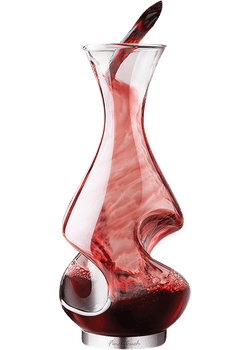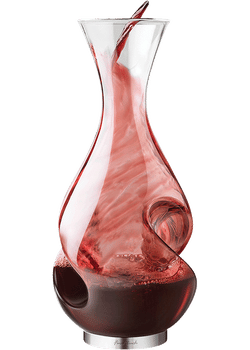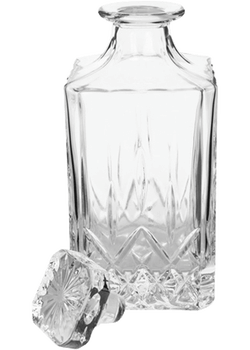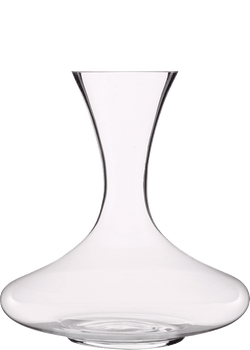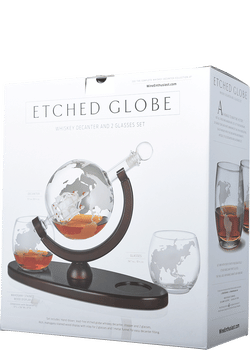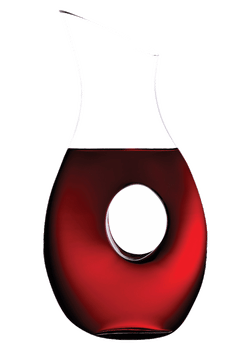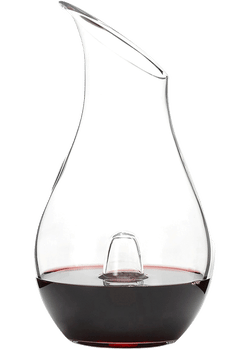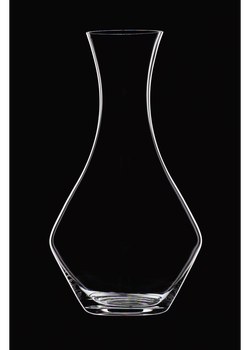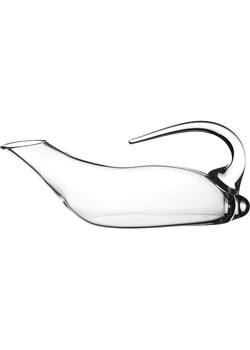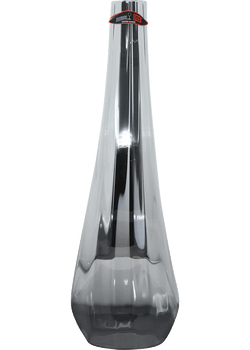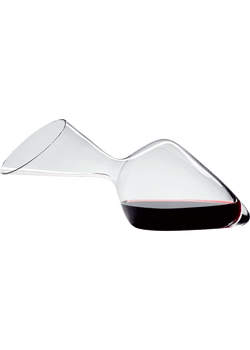What is decanting?
Decanting is far less complicated than you might think. The process of decanting is essentially pouring a bottle of wine into another vessel, known as a decanter. This aerates the wine while separating any sediment at the bottom. The hardest part about decanting is knowing which styles of wine require decanting. Read on to learn everything you'll need to know!
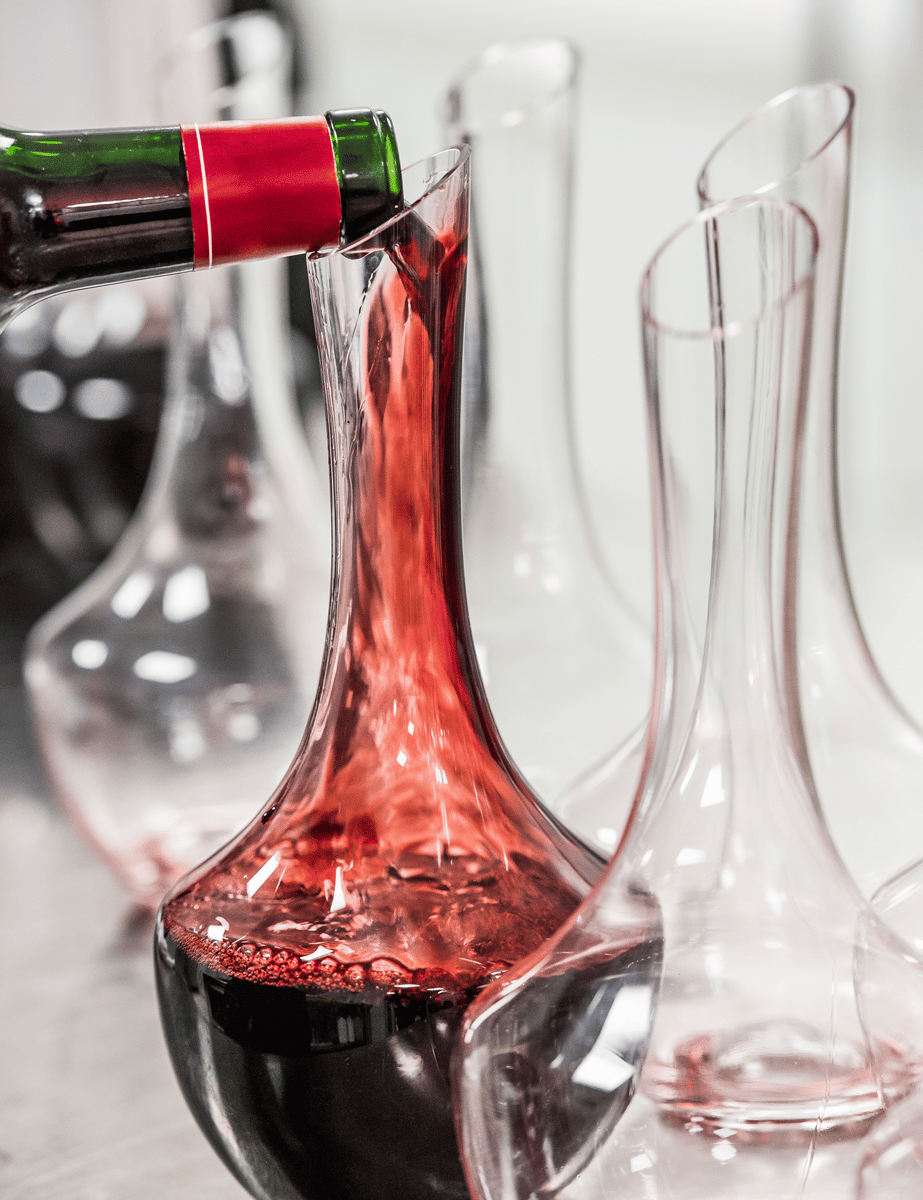
Why decant wine?
Flavors and aromas are enhanced, highlighting the best parts of the wine. If you're wondering which red wines to decant, there are several fan favorites, including Cabernet Sauvignon, Bordeaux, and Burgundy. Sommeliers debate whether to decant Pinot Noir, though the choice is ultimately yours. Typically, you do not need to decant white wines, though that’s not a hard and fast rule. The only wines to avoid decanting are Champagne and sparkling wines — you’ll lose the carbonation that makes these wines so much fun.
Delicate wines and prized bottles in your collection are better served from bottle to glass. If you want to give a quick kick of oxygen to an older vintage, serve it immediately after pouring it in your decanter. You may want to skip the decanter for rare vintages, unless you’re a true wine connoisseur. If you're new to decanting, start with younger bottles and wines with full-body flavors, which can benefit from the decanting process.
What is a decanter?
Put simply, a decanter is a vessel that you pour a bottle of wine into in order to separate sediment from the liquid. Decanters come in all shapes and sizes and are decorative additions to your barware and glassware collection. A sommelier might recommend varietal-specific and high-end decanters. Riedel decanters are some of the best decanters, because they’ve been created by master craftsmen for centuries. Many wine enthusiasts keep it simple with one or two eye-catching decanters they like best. Plus, it’s always fun to experiment with different types and styles.
Types of decanters
Choosing the type of decanter that is best for you depends on your personal style, your favorite wines, and how you want to serve your wine. From easy pouring to enhanced aeration, every decanter brings unique benefits to your wine and the experience of drinking it.
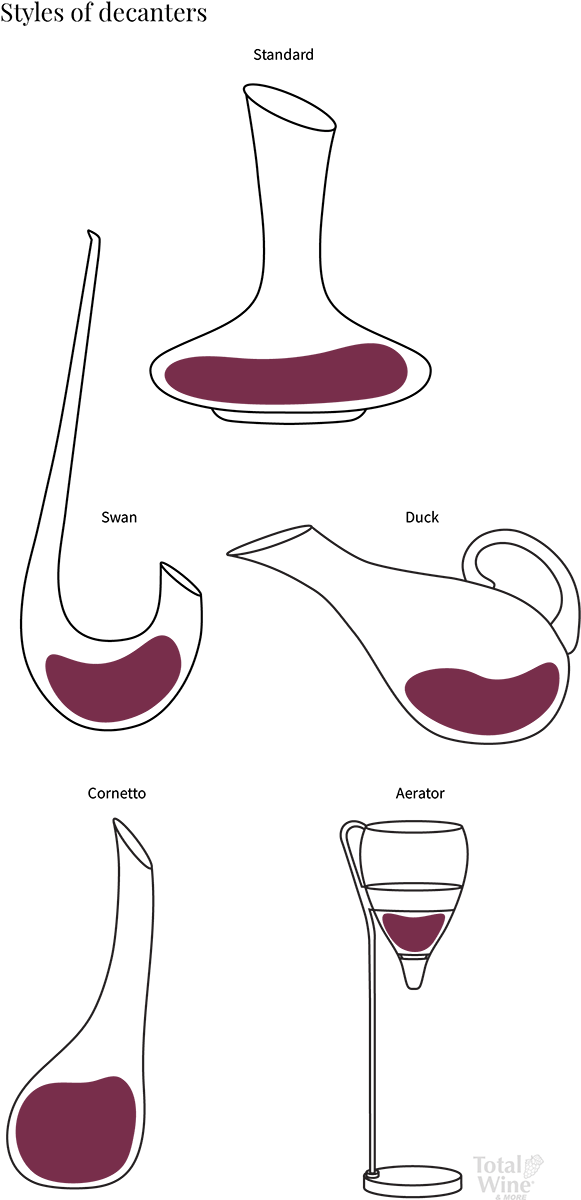
Standard decanter
A standard decanter balances sediment separation and aeration. It has a wide base with a tapered neck. A multipurpose hybrid that serves both red and white wines, it’s always a safe bet. A large decanter is best for bold reds, while a smaller version may be better for light-body selections.
Swan decanter
Generally, the swan decanter is the largest of the bunch and features a wide base that curves into the shape of the letter J. Wine pours from the wide end, while the base aids the wine’s exposure to oxygen and separates sediment. This decanter works well for bold wines.
Duck decanter
The duck decanter looks a bit like a teapot tipped on its side. Typically, it’s simple to pour wine from a duck decanter, with its tapered rim and glass handle. While it might not aerate your wine as much as a swan decanter, it’s great for heavy sediment and a shorter decanting time.
Cornetto decanter
A wide base and lengthy curved neck best characterize a cornetto decanter. The unique neck functions by aerating wine after the sediment is separated. This decanter is recommended for wines that are more delicate and less bold.
Aerator
What does an aerator do? Aerators decant a wine quickly, saving time by rapidly exposing it to oxygen. The aeration heightens a wine’s aroma and flavor profile. Aerators can resemble a glass beaker or small wine glass. Wine filters through an aerator and easily pours for serving.
How to decant wine
-
Remove the cork and look for sediment at the bottom of the bottle with a light source (historically a candle).
-
Slowly pour the bottle into your decanter to aerate the wine without disturbing the sediment.
-
Stop pouring once the sediment reaches the neck of the bottle, without letting it flow into the decanter.
-
Allow the wine to rest in the decanter until it is ready to drink.
-
Serve and enjoy!
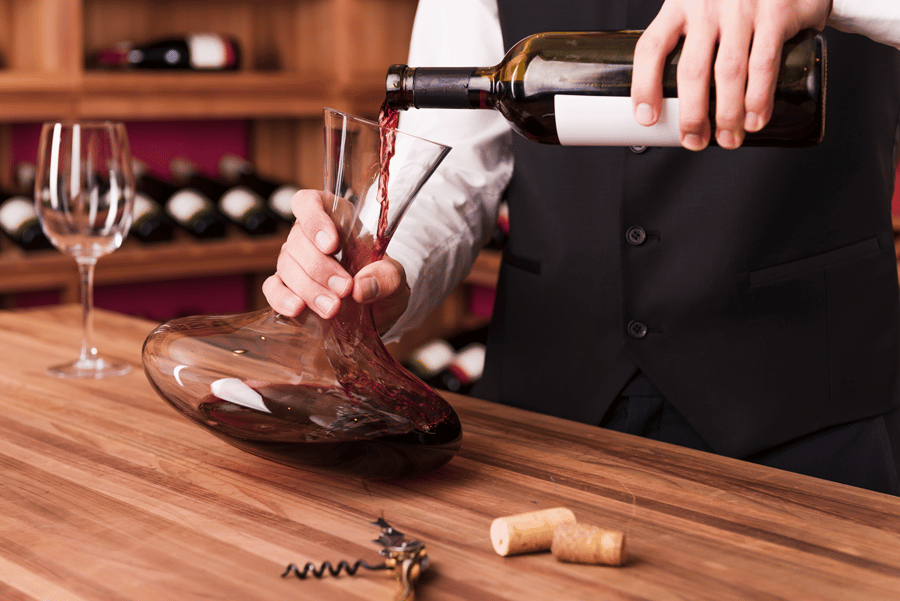
How long to decant wine
Are you unsure of how long to decant wine? There can be an art to it, and timing plays a part. Often, it’s recommended you decant wine for a minimum of 30 minutes. You likely should not decant your wine for hours and hours. If you’re being adventurous and decanting a chilled wine, the decanter should also be kept at a cold temperature before serving.
Decanting decisions
To decant or not decant? Enhancing your wine by decanting can make all the difference. Arguably, decanting wine is not wholly necessary. However, it does improve the wine’s aroma and flavor profile. Plus, it adds to an enjoyable sensory experience. That, combined with the beauty of a fine decanter, is too tempting to resist!

